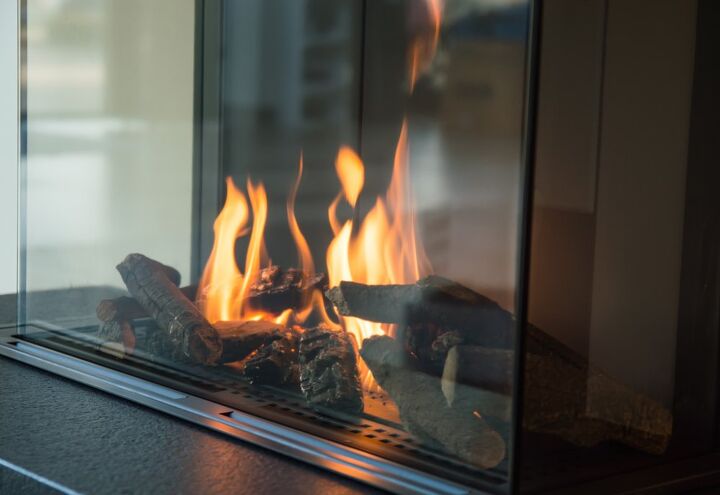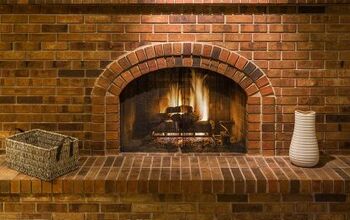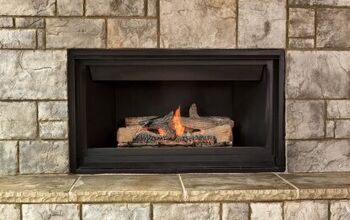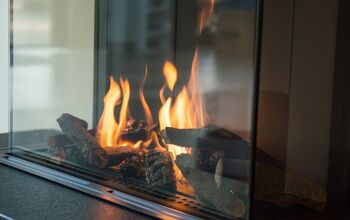Will A Gas Fireplace Work Without Electricity?

Gas fireplaces are more convenient and easier to maintain than wood-burning fireplaces. A power outage can quickly make your home feel uncomfortable, and it can be tempting to use your gas fireplace. So, will a gas fireplace work without electricity?
A gas fireplace will work without electricity, but it’s only safe if you have a vented fireplace. Gas fireplaces with an Intermittent Pilot Ignition system won’t work during a power outage because they require electricity. However, some modern IPI gas fireplaces can work when the power goes out with a battery-powered ignition backup.
Standing pilot gas fireplaces will always work during a power outage because they run via a pilot light. Never attempt to run a gas fireplace when the power is out if it isn’t vented because of the emissions. Follow along as we explore how a gas fireplace can work without electricity.
Does a Gas Fireplace Need Electricity?
The average gas fireplace does not need electricity to start a fire. Gas fireplaces use a non-electrical ignition system to light the fuel source in most cases. The spark from the ignition lights the natural gas or propane to spark a flame and maintain the fire.
Some gas starter fireplaces require electric ignition to spark the pilot light. Gas starter fireplaces are unique from gas fireplaces and only use a gas fuel source at the beginning to start the fire. With that said, even some traditional gas fireplaces require electricity to run.
It all depends on the ignition system that your gas fireplace uses. Gas fireplaces either have a millivolt or electric ignition system. As the name suggests, you need electricity to start a fire with an electric ignition system. Millivolt systems don’t require electricity to create a spark and ignite the fuel source.
Standing Pilot
Standing pilot gas fireplaces can work during a power outage because they don’t require electricity. Older homes generally have a standing pilot gas fireplace, but their convenience makes them just as ideal for modern homes. They work via a pilot light that stays on so that you can start a fire at any time, whether there is power or not.
You simply turn the gas valve to release the natural gas or propane to ignite the fire. The pilot light stays on at all times even when you aren’t using the fireplace. Standing pilot gas fireplaces sometimes require more maintenance due to thermocouple problems, but you can easily replace them if you face ignition problems.
The main downside to standing pilot gas fireplaces is that they consume a lot of fuel. This can prove costly and increase your monthly gas bills. However, many homeowners find the tradeoff worth it because you can run a standing pilot gas fireplace year-round regardless of poor weather.
Intermittent Pilot Ignition
Intermittent Pilot Ignition, or IPI gas fireplaces, require electricity to run. You simply press a switch to start a fire with an IPI gas fireplace and the fuel source will ignite. Energy savings are a major advantage unique to IPI that is unfortunately absent with standing pilot fireplaces.
Gas consumption isn’t an issue with IPI gas fireplaces because you need to keep a pilot light lit. Instead, the electronic system turns on and ignites the pilot light when you choose to. However, IPI systems can limit homeowners who want to start a fire during a power outage.
Older Intermittent Pilot Ignition systems generally cannot work without power. Some modern manufacturers include a battery-powered ignition alternative specifically for power outages.
Can You Manually Light a Gas Fireplace With Electric Ignition?
You can manually light a gas fireplace with electric ignition in most homes. However, it is only possible if you can easily access the gas valve. Turn on the gas valve by hand so that gas will flow to the pilot light.
Suppress the ignite knob on your pilot light for 10 seconds to see if a flame appears. Let go of the button if nothing happens and try again as many times as you need to. Pilot lights can be difficult to work with, particularly if it is an old unit or if you don’t use it often.
Never try to force your pilot light to ignite if your home smells strongly like gas. Otherwise, check to see if there is a battery ignition backup available for your gas fireplace. That way, you can save time and gas, especially if your gas valve and pilot light are stubborn.
Gas Fireplace Power Outage Carbon Monoxide
Gare fireplaces create carbon monoxide, which is even more dangerous during a power outage. Your HVAC system won’t circulate air throughout your home and ventilate like usual when the power goes out. This will cause the carbon monoxide to stick around in a high concentration which increases the health risks.
However, you won’t have to worry as much about carbon monoxide if your gas fireplace is vented. Both a direct vent and B-vent can circulate air in your home to remove emissions and carbon monoxide. In that case, it is generally safe to run a gas fireplace during a power outage.
It is unsafe to run a ventless gas fireplace during a power outage, and it can lead to health complications. Ventless gas fireplaces are illegal in some states, such as California, because of the carbon monoxide risk.
Is it Safe to Use a Gas Fireplace Without Electricity?
You can safely use a gas fireplace without electricity if it is vented. However, you should shut off the gas valve if the flame goes out during a power outage. Never try to start your gas fireplace if your home smells like gas because that is a severe fire hazard.
Even a standing pilot ignition system can be a fire hazard if the thermocouple isn’t working. Repeated attempts to ignite a fire while the pilot light is on can be dangerous if there is too much gas in the air. Otherwise, it is safe to use a gas fireplace without electricity as long as it is properly vented.
Summing It Up
A gas fireplace will work without electricity if you have a standing pilot ignition system. Some electric Intermittent Pilot Ignition systems can work during a power outage with a battery-powered backup. Otherwise, you can try to manually start a fire if you turn the gas valve and light the pilot light.
It is dangerous to run a gas fireplace without a vent during a power outage due to the emissions. Carbon monoxide and nitrous dioxide will linger in the air because your HVAC system won’t work. The best option is to vent your gas fireplace and purchase a battery-powered backup ignition for power outages.
Related Guides

Nick Durante is a professional writer with a primary focus on home improvement. When he is not writing about home improvement or taking on projects around the house, he likes to read and create art. He is always looking towards the newest trends in home improvement.
More by Nick Durante














![How To Turn On A Gas Fireplace With A Wall Switch [Quickly & Easily]](https://cdn-fastly.upgradedhome.com/media/2023/07/31/9076525/how-to-turn-on-a-gas-fireplace-with-a-wall-switch-quickly-easily.jpg?size=350x220)












